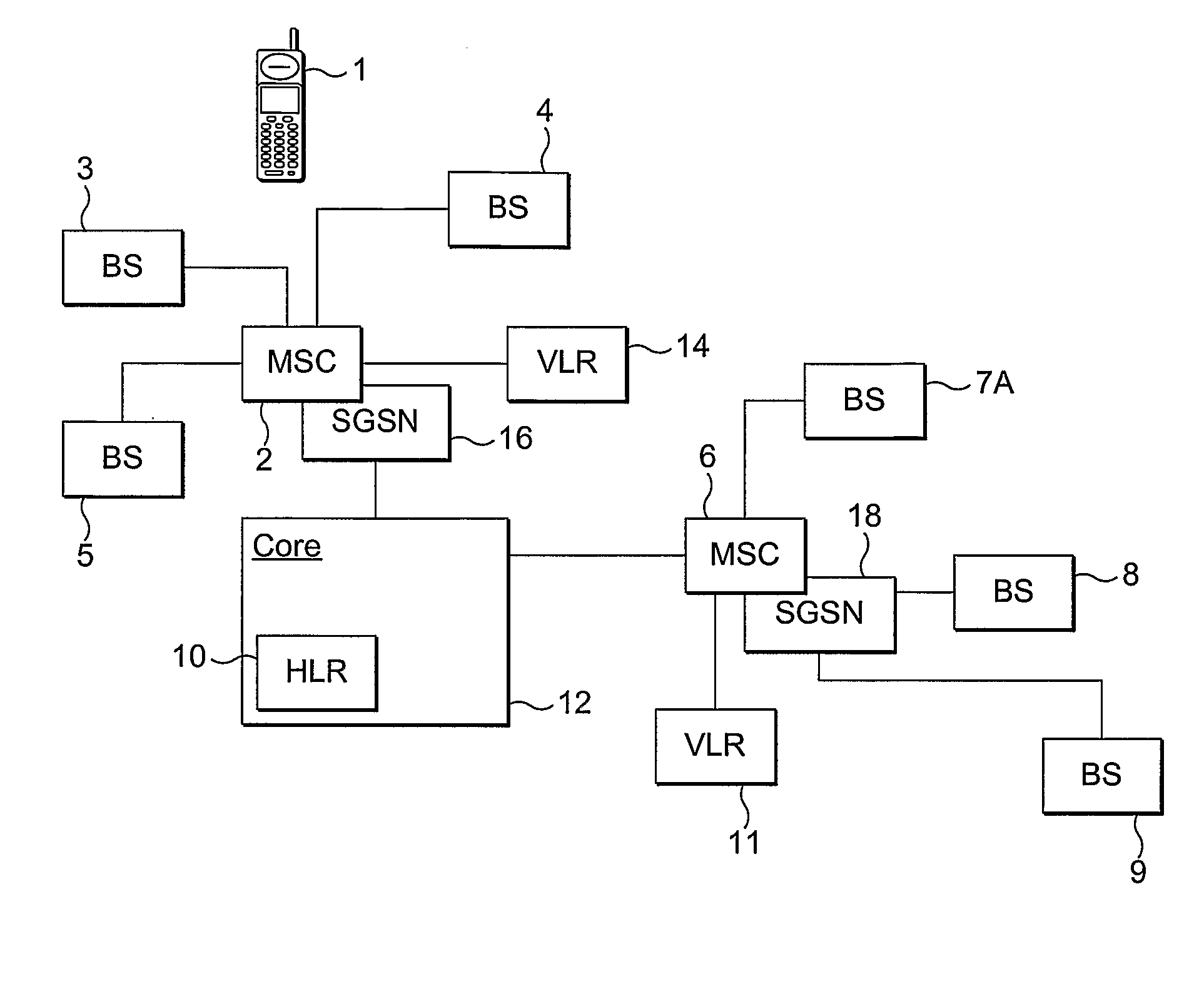Mobile communications network
a mobile communication and network technology, applied in the field of mobile communications networks, can solve the problems of user confusion, user unfulfilled awareness of the costs involved, and the improvement of access to wireless services, etc., to achieve the effect of enhancing user confidence and reducing user confusion
- Summary
- Abstract
- Description
- Claims
- Application Information
AI Technical Summary
Benefits of technology
Problems solved by technology
Method used
Image
Examples
example 1
[0050]In a first example embodiment of the invention, the engine may implement a straightforward profile of disallowing all download / upload requests when the mobile device is roaming. This example is ideal for a cost conscious user, who does not want any risk of inadvertently downloading or uploading data and thereby generating unexpected monetary charges. In an alternative version of this example, in the event of the engine determining that the mobile device is roaming, rather than simply blocking all download / upload requests, the engine will flag the issue with the device user before proceeding.
[0051]For instance, upon the engine determining that the device's user interface (UI) components such as a web browser or backup & restore client may need to be activated, the engine will determine the network on which the device is currently operating. The engine will then determine if the device is operating on its home network or on a roaming network. If the device is operating on a roam...
example 2
[0055]In certain embodiments of the invention, the engine presents the user with more information about the expected cost of proceeding with the data transfer in the . present operating network. In such embodiments, details of the user's tariff may be stored on, or accessed by, the engine. When the user requests transfer of data, the engine compares the current network with networks stored against the user's tariff and presents to the user in the message the specific cost implications of proceeding with the data transfer. In a standard embodiment different costs may be associated with transfer on the home network and transfer when operating on a roaming network. As part of the cost estimate, the engine may determine the size of the file to be transferred and calculate the estimated cost associated with that size data file in the current network based on the user's tariff.
[0056]In further embodiments, users can set predefined cost limits above which the user requests a prompt for aut...
example 3
[0058]In a further embodiment of the invention, the engine makes decisions, or requests authorisation, of whether to execute a data transfer based on the bearer to which the device is currently connected. If a user requests the download of data, such as a music video or even an episode of a television program, the engine will note the service request and check if a parameter profile has any requirements for such a service, such as a minimum signal strength requirement and / or a required bearer type (i.e. 3 G only). The parameters defined in this profile may be set, for example, by the service provider and / or the user. The profile is typically a table stored in a memory defining parameter properties, such as ranges, limits and types, which are applicable to each type of service request. Examples of “service requests” include data downloads, uploads, data back up requests and data restore requests.
[0059]Therefore, once any parameter requirements are determined, the engine will determin...
PUM
 Login to View More
Login to View More Abstract
Description
Claims
Application Information
 Login to View More
Login to View More - R&D
- Intellectual Property
- Life Sciences
- Materials
- Tech Scout
- Unparalleled Data Quality
- Higher Quality Content
- 60% Fewer Hallucinations
Browse by: Latest US Patents, China's latest patents, Technical Efficacy Thesaurus, Application Domain, Technology Topic, Popular Technical Reports.
© 2025 PatSnap. All rights reserved.Legal|Privacy policy|Modern Slavery Act Transparency Statement|Sitemap|About US| Contact US: help@patsnap.com



